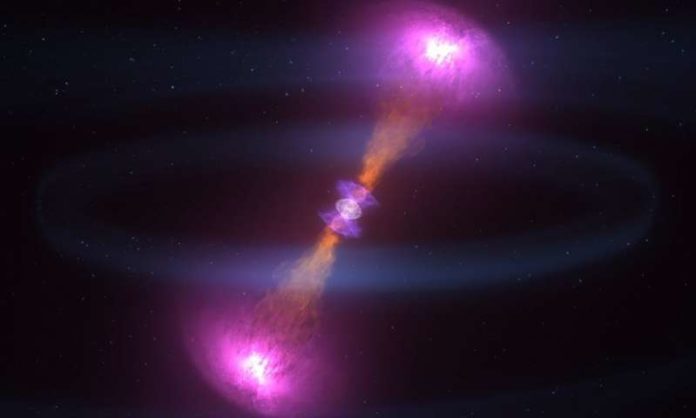The earlier discovery of gravitational waves from colliding neutron stars was groundbreaking. But it fails to add extra dimensions to our understanding of the universe.
A new study by the University of Chicago discovered no confirmation for additional spatial measurements to the universe in view of the gravitational wave data.
The first-ever detection of gravitational waves in 2015 was the result of two black holes crashing together. Last year, scientists observed two neutron stars collide.
The real distinction between the two is that cosmologists could see the fallout of the neutron star collision with a conventional telescope, creating two readings that can be looked at: one in gravity, and one in electromagnetic (light) waves.
Prof. Daniel Holz said, “This is the very first time we’ve been able to detect sources simultaneously in both gravitational and light waves. This provides an entirely new and exciting probe, and we’ve been learning all sorts of interesting things about the universe.”
Graduate student Maya Fishbach, a co-author on the paper, said, “Scientists have proposed all kinds of theories to explain dark matter and dark energy, and “a lot of alternate theories to general relativity start with adding an extra dimension. One theory is that over long distances, gravity would “leak” into the additional dimensions. This would cause gravity to appear weaker and could account for the inconsistencies.”
The one-two punch of gravitational waves and light from the neutron star collision recognized a year ago, offered one path for scientists to test this hypothesis. The gravitational waves from the impact resounded in LIGO the morning of Aug. 17, 2017, trailed by discoveries of gamma-rays, X-rays, radio waves, and optical and infrared light.
In the event that gravity was spilling into different measurements en route, at that point, the signal they gauged in the gravitational wave detectors would have been weaker than anticipated. But, it wasn’t.
Fishbach said, “There are so many theories that, until now, we didn’t have concrete ways to test. This changes how a lot of people can do their astronomy.”
Holz said, “We look forward to seeing what gravitational-wave surprises the universe might have in store for us.”
Their research was published in the Journal of Cosmology and Astroparticle Physics.
